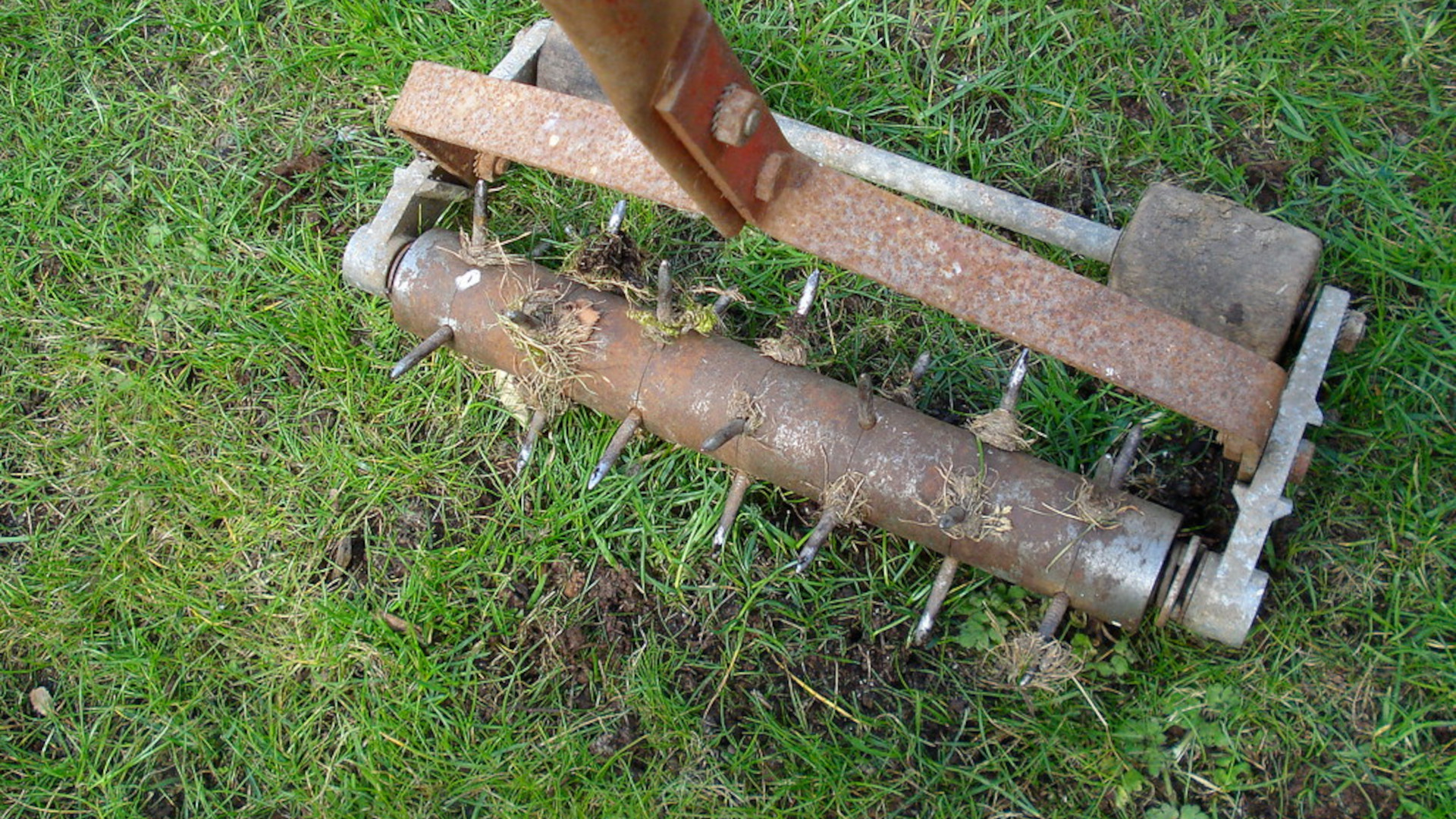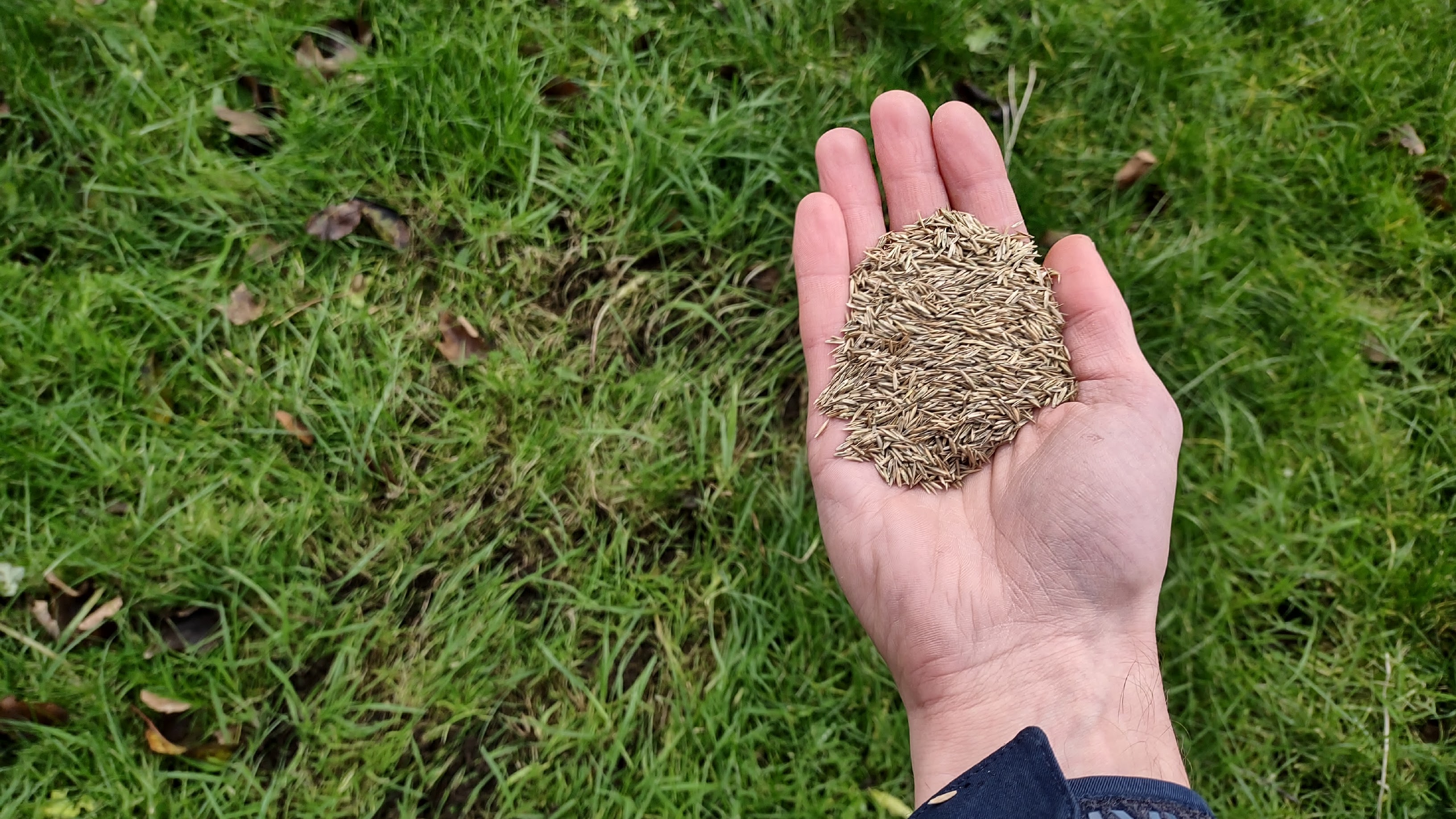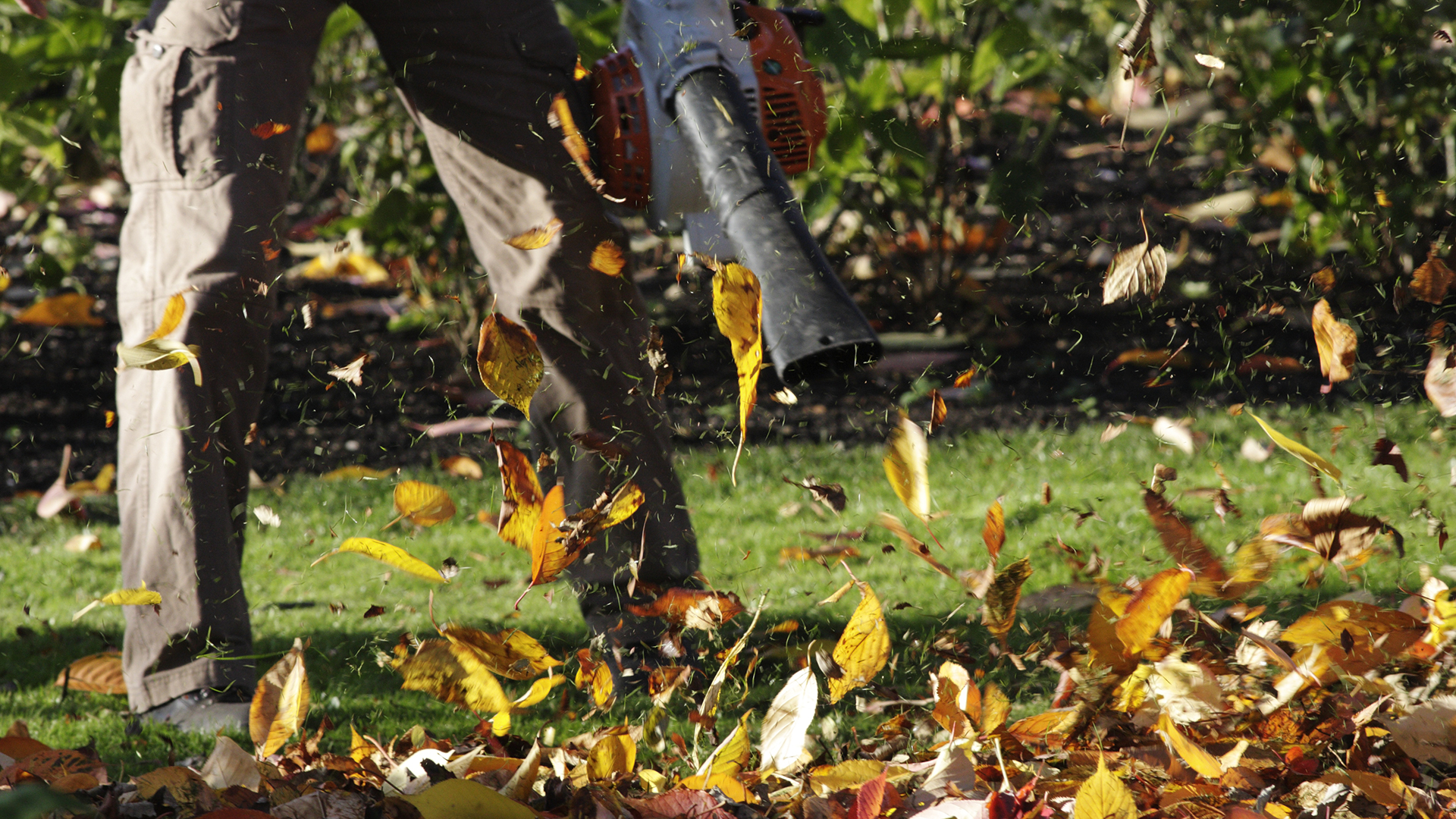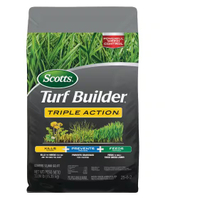Fall lawn care is something that is often overlooked, especially with the weather worsening and the temperatures plummeting; stepping out into the backyard isn't as appealing as it perhaps was just a few weeks ago.
The key is that if you prepare your outdoor space when the seasons change, you'll achieve a stronger, healthier lawn longer term. Looking at a gorgeous green lush lawn is as much about appreciating how it got to that point. So what can you do in the fall to make your lawn greener in the spring?
This guide will lay out the most important fall lawn care actions you can be thinking about right now which includes some expert top-tips from Lawn Association Chairman, David Hedges Gower. All you need to do is find the right clothes for gardening in, and be armed with your best lawn mower and leaf blower so you're ready to head outside sooner rather than later.
Fall lawn care
Taking some essential fall lawn care steps will help to ensure that the grass is in its best possible condition for winter. Here's what you'll need to do.
1. Mow the grass
You may have one more cut of your lawn with a lawn mower before the cold stops the grass from growing to brave out the winter. Make sure it's done well and you avoid the common lawn mowing mistake of cutting the grass when it is wet, no matter how tempting it may be.
Knowing how often to mow your lawn is key, regardless of the time of year. When the temperature falls below about 40°F grass becomes dormant, so it won’t grow. This means that mowing will do no good to your lawn. Once you see fresh new growth in spring, then that’s the time to get out your mower for the first cut of the season. Lawn expert David Hedges-Gower sums up the timings nicely: “If it doesn’t stop growing, then don’t stop mowing.”

2. Dethatch the lawn
When you dethatch/scarify your lawn, similar to the lighter thatching process, you can follow the process of how to detach a lawn by using your rake or dedicated scarifying tool, to collect up all the dead grass and old moss. Think of this as a type of top layer cleaning where you are clearing access to the precious soil beneath. While scarifying is for rougher grass, thatching is for more refined lawns, so pick your process based on your current lawn status.
Gower says: “Removing thatch is something best done at least yearly (we prune most plants every year). That way, we don’t have to remove too much in one go and therefore our lawn recovers much faster. Also, be aware that trying to remove 10 years worth of un-scarified lawn material in one go might not leave enough grass to fill back in. So, see scarification for what it is, a pruning technique that controls thatch levels in order for moss not to have a chance to survive.’’
Once that top layer is cleared of moss and old grass, which can block water and fertilizer reaching the soil, you now have better access to the roots for treatment. This can actually save you time and money as you then need to use fewer soil treatments to have the best possible effects.
Don't be afraid to dig deep in the fall as all that young grass from early summer is now gone and you can rely on the tougher bedded in grass to survive even more vigorous maintenance work.

David Hedges Gower has more than 40 years of lawn and turf experience. In 2004 he established his own successful lawn care company which he continues to run to this day. David is now the chairman of the recently established Lawn Association, and consults with the power tool brand Stiga as a lawn expert.
3. Flatten the lawn
During the summer season your lawn grass, and the soil under that, can take a bit of a beating. The results can be uneven lawn areas which not only look less attractive but can also be potential pooling areas for the extra water that will likely fall over the winter season. So if you have kids or dogs, which can really tear up the lawn, then this process is likely a must.
This flattening method helps you to avoid areas of flooding and dry spots, which can result in even more uneven surfaces when the summer comes around for next season's growth.
Go very basic and flatten with a spade, or an edging iron, to cut up areas of grass and then aerate with a fork and flatten before re-laying turn that is now level. Another option for less extreme levels is to use a heavy roller to flatten out the soil, although this does flatten the grass too.
4. Aerate your lawn
The importance of aeration cannot be understated – this is essentially how your lawn breathes. Despite that sounding like something you should be doing often, it's actually only necessary once every two or three years. This is because it involves spiking the soil and potentially killing some grass.
Since this will allow air and water to reach the soil more easily, think of it as a grass prune back in aid of helping the rest of the grass grow more effectively. Knowing how to aerate your lawn is as simple as using a fork where you walk the lawn and forking into the soil.
Another option is to invest in a dedicated aerator which also uses spikes but on a roller. This allows you to move up and down your lawn a lot faster while still creating plenty of aeration holes – ideal for larger spaces.
You can buy this simple lawn spike aerator on Amazon

5. Top dress your lawn
Top dressing is something that's ideally done during the fall to make sure your lawn has the most favorable growing conditions when it comes time to start growing again.
Top soils will vary from area to area, with under soil often being more sandy near the coast and potentially more clay like inland. Even this varies and it is a good top dresser which is able to offer balance to that soil so your grass can get the right combination of space and air but with support from solidity.
Think of top dressing as similar to varnishing a boat where several layers need to be thickly applied over time – so you'll need about 11lbs of top dressing per 10 square foot.
You can do this using a top dresser which you roll along and that evenly distributes the top dressing for you, leaving the most ideal and even end result.
6. Overseed the lawn
If you leave your grass to grow on its own you may find other life muscles in on that and overpowers the grass. This can lead to moss and weeds. Tackle this by supporting your lawn with more grass seeds on a regular basis.
Towards fall is a good time to overseed as this allows the new seed to set in ahead of the cold when other potential space poachers, like weeds, can be killed off by the cold. That can mean you come back into the spring and summer with a thicker and more consistent lawn next year.
You can seed by hand, use boxes with built-in spouts, or use a seed spreader like this handheld Scotts Wizz Spreader for Grass Seed ($31.49 on Amazon) if you have one or want to invest to cover larger areas more easily and evenly.

7. Clear your leaves
This one is easy to remember as you mustn't leave leaves. Should you let the leaves lie on top of the grass after that fall, they can block the grass from light, air and even water. This can kill the grass and change the soil as that mulches into compost. Sure compost can be a good thing, but it won't help on your grass as that'll die and become a part of the compost.
Use a rake or leaf blower to keep your grass clear during the fall to ensure that lawn has access to light, air and water. This will set you up for a stronger lawn with a better chance of surviving the winter season.
You can then follow our guide to how to use leaf mulch for lawn fertilizer so you can turn the fallen leaves into a natural fertilizer. This will replenish the soil with any lost nutrients, to promote healthy, greener grass when spring comes back around. Alternatively, ready-made fertilizer is widely available from stores such as Amazon or Home Depot.
8. Then, keep off the grass
The last tip is the simplest one to follow: stay off the grass during the winter months. You don't have to avoid walking on the lawn entirely, don't fret. This is the time of year when a frost will set in and the grass can become hard and consequently more brittle. This is when any heavy footed visitors can cause damage to the grass which is effectively hibernating for the winter.
You can actively protect your lawn from frost damage too. As long as you've levelled your lawn as noted above, this will avoid frozen water swell damage. You can also set up wind breaks which help to keep the lawn temperature from dropping too low if you get a lot of wind. Not to be a killjoy, but leaving a snowman up can also cause damage to that area, so think about where you build yours. Lastly, of course, don't cut the grass – it's sleeping.
What should I put on my lawn in fall?
If you want to improve the quality and appearance of your lawn, fertilizing can help to provide green growth and combat diseases. A well fertilized lawn will help to prevent damage to root and blades of grass, too.
How do I fertilize my lawn in the fall?
You can usually apply fertilizer to wet grass, by spreading it evenly across the lawn. Our lawns are hungry at this time of year and will establish their root systems during this period.
A day or two after applying fertilizing you can water your lawn. This will rinse fertilizer off the grass blades and into the soil.
When should you overseed your lawn?
Overseeding the lawn is better done at the start of fall, well ahead of the first frosts. September is the best month in the year to overseed your lawn, early October at most if you want to give the seeds the best chance.


